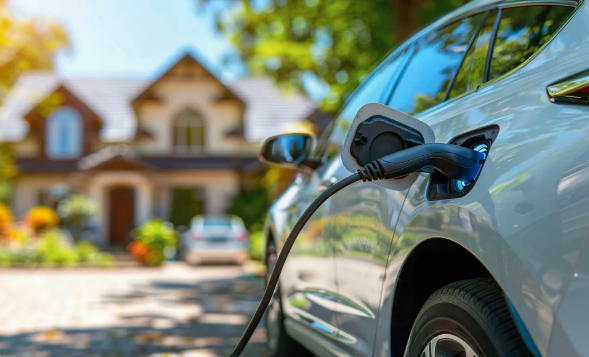understanding the future of ev charging solutions: powering the electric revolution

As more people switch from traditional gasoline-powered cars to cleaner electric alternatives, the demand for reliable and efficient ev charging solutions has skyrocketed. these solutions play a crucial role in supporting the adoption of evs by providing accessible, fast, and user-friendly charging options. in this article, we will explore the different types of ev charging solution their benefits, challenges, and how they are shaping the future of transportation.
what are ev charging solutions?
at its core, ev charging solutions refer to the technologies, equipment, and services designed to recharge electric vehicles safely and effectively. unlike fueling a petrol or diesel car, evs rely on electricity stored in batteries. these batteries must be replenished through dedicated charging systems that vary in power, speed, and connectivity.
these solutions can be installed in private homes, workplaces, commercial facilities, or public locations, and they come in different forms to meet the needs of diverse users and environments.
types of ev charging solutions
ev charging solutions can be categorized into several types depending on charging speed and technology:
- level 1 charging: this is the most basic form, using a standard household 120-volt outlet. it offers slow charging, often taking more than 12 hours for a full battery charge. it is mainly suited for overnight home use and plug-in hybrids.
- level 2 charging: operating on 240 volts, level 2 chargers deliver faster charging, typically providing a full charge in 4 to 8 hours. these chargers are common in residential settings, offices, and public parking lots.
- dc fast charging: also called level 3, dc fast chargers bypass the vehicle’s onboard charger and deliver direct current at high power (usually 50 kw and above).
innovative features enhancing ev charging solutions
today’s ev charging solutions go beyond just providing electricity.
- smart charging: connected chargers that communicate with mobile apps or cloud platforms allow users to schedule charging during off-peak hours, monitor energy consumption, and receive alerts. smart charging helps reduce electricity costs and eases grid load.
- wireless charging: this emerging technology enables vehicles to charge without physical cables, using inductive pads embedded in parking spaces. while still in early stages, wireless charging promises unparalleled convenience.
- solar-powered chargers: integrating solar panels with charging stations allows for greener charging by harnessing renewable energy, reducing dependence on the grid, and lowering emissions.
- vehicle-to-grid (v2g): some ev charging solutions support bidirectional energy flow, where evs can feed stored electricity back into the grid during peak demand, aiding grid stability and providing potential financial benefits to owners.
challenges facing ev charging solutions
despite the rapid growth, the sector faces several hurdles:
- infrastructure gaps: many areas still lack sufficient charging stations, especially in rural or less-developed regions.
- high installation costs: particularly for fast chargers, initial capital investments can be prohibitive.
- grid capacity concerns: increasing numbers of chargers put stress on local electricity networks, requiring upgrades and smart management.
- lack of standardization: diverse charging protocols and connector types can create compatibility issues.
- user experience issues: inconvenient payment systems, charger availability, and maintenance can deter users.
See also: Streamlining Success: The Multifaceted Benefits of Payroll Management Services
selecting the right ev charging solutions
- usage patterns: home users might prefer level 2 chargers with smart scheduling, while commercial operators may need multiple fast chargers.
- vehicle compatibility: ensuring chargers match the car’s charging protocol and connector is essential.
- technological integration: chargers with smart features can optimize energy use and user convenience.
the role of stakeholders in advancing ev charging solutions
government policies and incentives play a significant role in accelerating deployment of ev charging solutions.
meanwhile, industry players—from charger manufacturers to utilities and automotive companies—collaborate to build comprehensive networks, innovate technologies, and improve interoperability.
community engagement also matters: educating potential users and addressing their concerns is vital to broad acceptance.
future trends shaping ev charging solutions
several trends are poised to transform ev charging solutions further:
- ultra-fast charging: chargers exceeding 350 kw will shorten charging times dramatically, making ev refueling comparable to gasoline stops.
- renewable integration: expanding use of solar, wind, and other renewables will make charging cleaner and more sustainable.
- artificial intelligence: ai-powered systems will predict demand, optimize grid load, and personalize user experiences.
- mobility ecosystems: charging will become part of broader transportation networks, including ride-sharing, fleet management, and battery swapping.
- urban design: cities will increasingly incorporate charging infrastructure into smart city plans, enhancing accessibility and environmental goals.
conclusion
ev charging solutions are at the heart of the electric vehicle revolution. by providing accessible, fast, and intelligent ways to recharge evs, these solutions help overcome barriers to adoption and accelerate the shift toward sustainable transportation.
whether at home, work, or on the road, having reliable and efficient charging options empowers consumers and supports global environmental goals. although challenges remain, continued innovation, investment, and collaboration among governments, industry, and communities will drive the future of ev charging solutions.





